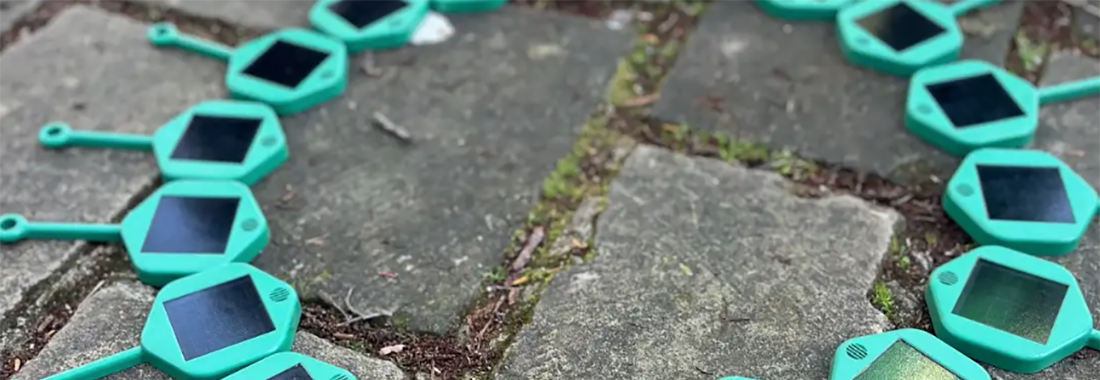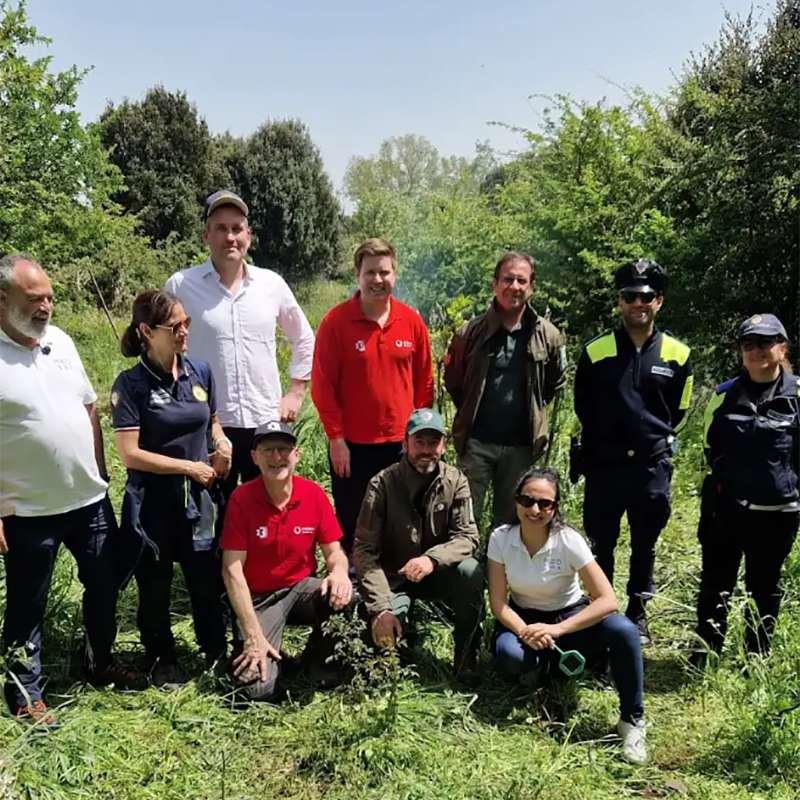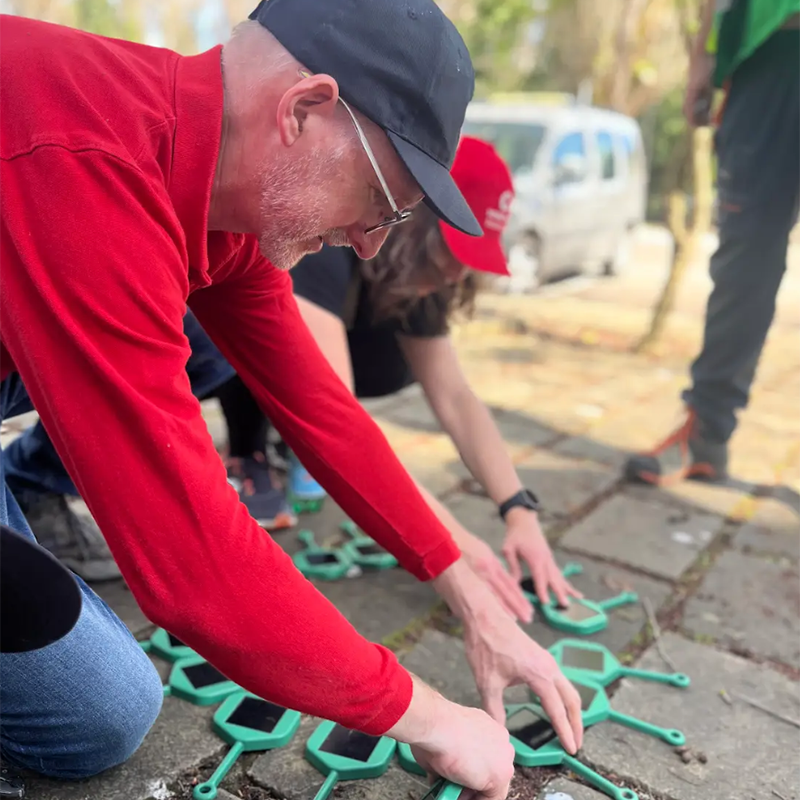At the end of April, a major breakthrough in fire prevention technology was achieved in the forests of San Leonardo. Thanks to pre-fire detection sensors, an IoT (Internet of Things) technology developed and donated by the Vodafone Business in collaboration with Extreme E, in a project coordinated by the MEDSEA Foundation, it is now possible to detect potential fires at their inception, allowing for timely and geolocated emergency responses.
About twenty advanced sensors, developed by the German company Dryad, were strategically placed no more than 100 metres apart, covering several hectares of forest in Santu Lussurgiu, Sardinia - one of the most hit territory by the mega fire in July 2021. These devices are not mere smoke sensors; they are equipped with technology capable of detecting a wide range of environmental changes, from heat and humidity to gas and temperature as well as they are connected to a Tree Growth Monitor sensor developed by Vodafone Business and installed in the same zone increasing the precision of the data on the area. This sophisticated data collection system has been tested under real conditions to verify the readiness and effectiveness of the detection system.
Over the past few months, these devices have collected and analysed essential daily data, which has enabled them to refine their ability to recognize the signs of an imminent fire.
Yesterday's simulation was not just a technology test but also a moment of collaboration among various organisations. Present were MEDSEA representatives from the land reforestation projects, including Carlo Poddi, the specialised team from Vodafone Business unit Graham Arnott and Reuben Kingsland representatives from Dryad Georg Bassenge, the general directorate of Civil Protection of the Sardinia Region with Daniela Pani, the mayor of Santu Lussurgiu Diego Loi, and the deputy mayor Francesca Citroni, along with some volunteers from the forest and environmental surveillance corps and “the barracelli”.
The test was successful: within a few minutes, after an exchange of information and confirmations among various sensors communicating to the collection gateway, the system sent out numerous alerts.
The regional civil protection, which is also testing fire detection systems with drones, explored the opportunities for cross-detection between sensors and drones. The former detect the presence of a potential fire, while the latter can provide better information on the size and characteristics of the fire, even before human intervention.
"Climate change scenarios put us in a state of permanent alert," explains Carlo Poddi, a forestry expert and head of MEDSEA's terrestrial reforestation activities, "making the increasingly extensive use of technology essential. These tools allow us to respond more effectively and adapt to the changing conditions that threaten our ecosystems."
Latest news

In Crete with ARTEMIS to protect seagrass meadows: 2nd Consortium Meeting
From March 4th to 6th, 2025, Heraklion (Crete) hosted the mid-term meeting of the ARTEMIS Interreg Euro-MED Natural Heritage project, organized by the Hellenic Marine Research Centre. This was a crucial moment to…

ImPelaghiamoci: A Year of Initiatives to Learn About and Protect Cetaceans with the Municipality of Sassari
Promoting greater knowledge of the resident cetaceans in the Pelagos Sanctuary*, a transboundary marine protected area encompassing France, Liguria, Tuscany, and Sardinia, to improve the protection and conservation of these species…

Reforestation Operations Resume in Montiferru: A Forest for Bees by MEDSEA
Reforestation efforts in Montiferru, led by MEDSEA, are back on track. Following the planting of the first 5 hectares of olive trees, holm oaks, and Mediterranean shrubs, the focus now shifts to melliferous plants to…

25 Events in Sardinia for World Wetlands Day
Wetlands such as ponds, lagoons, lakes, rivers, and peatlands form an endless world of aquatic ecosystems. In Sardinia, the call to explore these habitats is open this February with the Sardinian edition of World Wetlands Day.

COASTRUST: Launching Sustainable Coastal Management in Domus de Maria Sardinia
The activities of the COASTRUST project, funded by the European Interreg Euro-MED program, have officially begun in Sardinia. The initiative aims to promote shared environmental management in the Mediterranean's coastal areas, addressing anthropogenic pressures…

Join the World Wetlands Day Sardinia 2025 Calendar: register your Event by January, 22nd
World Wetlands Day is celebrated every year on February 2, marking the adoption of the Convention on Wetlands signed on February 2, 1971, in Ramsar, on the shores of the…

MEDSEA joins the Camargue Red Alert with the Mediterranean Alliance for Wetlands to save birdlife
The MEDSEA Foundation has officially joined 73 other international organizations in signing the Camargue Red Alert, a collective call to action to safeguard the Camargue wetlands in France.

Wetland4Change: MEDSEA in Valencia to Explore Natural Climate Solutions Through Wetlands
The MEDSEA team participated in the second Consortium meeting of the Wetland4Change project in Valencia from November 26 to 28, 2024. The meeting was organized by local project partners, the…

Malta’s First Posidonia Meadow Restoration Project Led by MEDSEA Foundation
Different islands, but similar issues for marine ecosystems, which are heavily threatened by unregulated anchoring from recreational boating and illegal trawling. In Malta, as in Sardinia, the damage is particularly…

We are all at 'Valencia'-like risk, and here’s why
Le recenti inondazioni a Valencia sono un esempio tangibile di come gli eventi estremi legati al cambiamento climatico stiano aumentando in frequenza, intensità e durata, colpendo duramente il Mediterraneo, un vero e proprio…

Monitoring of Posidonia oceanica Meadows Begins in the Marine Protected Area of Capo Testa Punta Falcone
The monitoring activities of the Posidonia oceanica meadows in the Marine Protected Area (MPA) of Capo Testa Punta Falcone, located in Santa Teresa Gallura, have officially begun. In recent days, the marine…

MEDSEA joined the 7th TransformAr Consortium Meeting in Exeter
In Late September, the seventh Consortium Meeting of TransformAr took place in Exeter in South West England, organised by the partner Westcountry Rivers Trust, who are coordinating the Nature Based solutions in the…

Architecture and Environment of Wetlands at Costa Produttiva, September 8-14 in Marceddì
From September 8 to 14, Marceddì (OR) hosted Costa Produttiva, a multidisciplinary workshop that combines research, innovation, and sustainability for the future of our coasts. Organized by the DICAAR of the…

Festambiente Award by Legambiente to the Mussel Shell Island at the Nieddittas Mussel Facility
This summer, the Biodiversity Award 2024 - Assunta Maria Brachetta Festambiente by Legambiente was awarded to Nieddittas for their project of creating an island from mussel shells, in collaboration with MEDSEA, off the coast of…

TransformAr Open Day in Marceddì: Marshes and Lagoons to Reimagine the Future
Natural Solutions to Adapt to Climate Change: Lagoons and Marshes. This topic was discussed during an immersive walk between the Marceddì Lagoon and the San Giovanni Marsh on Friday, July…

MEDSEA joined the Natural Heritage Interreg Euro-MED Mission in Rovinj for aligning in projects' Communication
MEDSEA stopped in Rovinj, Croatia, from June 26th to 27th, 2024, to participate in the Communication, Amplification and Policy activities of the Interreg Euro-MED Natural Heritage mission, which brings together the thematic projects…
- 1
- 2
- 3
- 4







